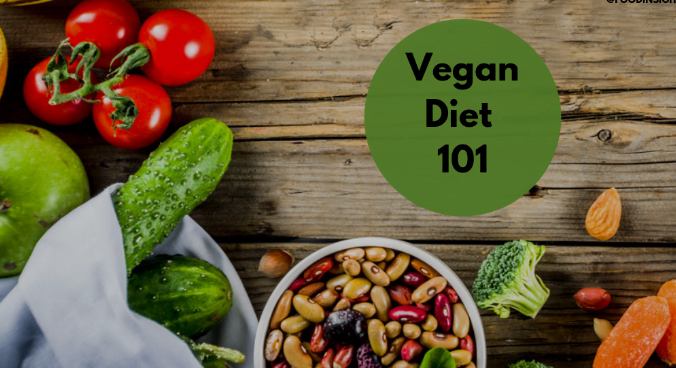In this article, you’ll learn how to make the transition to a plant-based lifestyle seamless — from changing your grocery habits to creating balanced meals and understanding nutritional needs. Let’s dive in.
1. Understanding What It Means to Go Vegan
Going vegan means eliminating all animal-derived foods from your diet, including meat, dairy, eggs, and even honey. A plant-based diet focuses on fruits, vegetables, whole grains, nuts, seeds, and legumes as the primary sources of nutrition. But it’s not just about cutting out animal products — it’s about embracing foods that promote vitality, sustainability, and compassion.
According to Healthline, vegan diets can reduce your risk of heart disease, type 2 diabetes, and high blood pressure. Plus, it’s an effective way to lower your carbon footprint. This shift isn’t about perfection — it’s about progress and finding joy in nourishing your body through plants.
For example, swapping cow’s milk for almond or oat milk, and replacing beef with lentils or chickpeas, are easy ways to begin moving toward a vegan lifestyle.
2. Start Gradually — Don’t Rush the Transition
If you’ve eaten meat or dairy your whole life, going vegan overnight can feel drastic. Instead, take a gradual approach. Begin by cutting down animal products one meal at a time. For instance, you might start with “Meatless Mondays,” then expand to plant-based lunches during the week.
Gradual transitions help your taste buds adjust while allowing you to explore plant-based recipes you truly enjoy. You’ll soon find alternatives that make the shift feel natural. Many successful vegans report that once they discover flavorful vegan meals — like spicy lentil tacos or creamy cashew pasta — they never look back.
To make the process smoother, follow resources like Forks Over Knives or Vegan.com, both of which offer recipes and expert guidance on going vegan.
3. Learn About Nutrition and Balance
One of the most common questions about a plant-based diet is: “Will I get enough nutrients?” The answer is yes — if you eat a balanced variety of whole foods. Focus on getting the right mix of macronutrients and vitamins:
- Protein: Lentils, tofu, tempeh, edamame, quinoa, and beans are excellent sources.
- Iron: Found in spinach, lentils, chickpeas, and fortified cereals. Pair with vitamin C foods like oranges for better absorption.
- Calcium: Obtain from fortified plant milks, kale, and almonds.
- Vitamin B12: Essential for energy and nerve health; take a supplement or choose fortified foods.
- Omega-3 Fatty Acids: Found in chia seeds, flaxseeds, and walnuts.
According to the Academy of Nutrition and Dietetics, well-planned vegan diets can meet all nutritional needs for every stage of life. If you’re unsure, consult a registered dietitian familiar with plant-based nutrition.
For additional tips, see our related post on Building a Balanced Vegan Plate (example.com).
4. Stock Your Kitchen with Plant-Based Essentials
Setting up your kitchen for a vegan lifestyle is one of the most empowering steps you can take. Stock up on staple ingredients that make plant-based meals simple and satisfying:
- Whole grains (quinoa, brown rice, oats)
- Legumes (chickpeas, black beans, lentils)
- Nuts and seeds (almonds, chia, flax, sunflower seeds)
- Fresh and frozen fruits and vegetables
- Plant-based proteins (tofu, tempeh, seitan)
- Healthy oils (olive, avocado, sesame)
Shopping tip: Stick to the outer aisles of the grocery store, where whole foods are found, and limit processed items. You’ll save money and eat fresher meals that align with plant-based diet principles. To explore budget-friendly shopping, visit Budget Bytes.
Want to make your weekly cooking easier? Learn how to organize meals in our guide on Easy Plant-Based Meal Planning (example.com).
5. Experiment with Vegan Versions of Your Favorite Meals
The easiest way to stick to a plant-based lifestyle is to veganize the meals you already love. Swap animal ingredients for vegan-friendly ones — for example:
- Use lentils instead of beef in tacos.
- Try coconut milk instead of cream in soups or curries.
- Substitute eggs with flaxseed meal or mashed banana in baking.
- Replace cheese with nutritional yeast or plant-based cheese.
Websites like Delish and BBC Good Food feature hundreds of creative vegan recipes. Over time, you’ll discover that going vegan doesn’t mean giving up flavor — it means exploring new tastes and ingredients.
6. Eating Out and Traveling as a Vegan
Living a vegan lifestyle doesn’t mean you have to give up dining out or traveling. Most restaurants now offer vegan options — you just need to know how to find them. Apps like HappyCow and Yelp help you locate vegan-friendly spots anywhere in the world.
When traveling, pack snacks like trail mix, fruit, or vegan protein bars in case options are limited. Don’t hesitate to ask restaurant staff about modifying dishes — most chefs are happy to accommodate plant-based diet preferences.
Vegan travel bloggers such as The Nomadic Vegan share valuable tips on maintaining a vegan lifestyle on the go.
7. Join Vegan Communities for Support
Transitioning to a plant-based diet is easier when you’re surrounded by people who share your goals. Join online communities, social media groups, or local vegan meetups to exchange recipes, advice, and encouragement.
Facebook groups like “Vegan Beginners” or Reddit’s /r/vegan forum provide friendly spaces to ask questions. You’ll find that the vegan community is full of supportive individuals ready to guide newcomers toward a healthy vegan lifestyle.
Connecting with like-minded people helps keep your motivation high, especially when facing social or cultural challenges along the way.
8. The Environmental and Ethical Impact
Beyond personal health, going vegan has far-reaching effects on the planet. Animal agriculture is responsible for nearly 15% of global greenhouse gas emissions, according to UN Environment Programme. Choosing a plant-based lifestyle drastically reduces your carbon footprint, conserves water, and minimizes land use.
From an ethical standpoint, it supports compassion and sustainability by avoiding products that exploit animals. The PETA organization reports that every vegan saves nearly 200 animals per year simply by changing their diet. That’s a powerful way to live in alignment with your values.
9. Stay Consistent and Enjoy the Journey
Becoming vegan is not about being perfect — it’s about making conscious, compassionate choices. There will be slip-ups or challenges, but that’s normal. Focus on progress and celebrate every step you take toward a more sustainable and mindful way of living.
Try journaling your progress, experimenting with new recipes, or visiting vegan restaurants once a week. Remember, a plant-based diet is a lifelong journey, not a short-term diet.
With consistency, patience, and curiosity, you’ll soon experience better health, more energy, and the satisfaction of living in harmony with your beliefs.
10. Final Thoughts: Embrace the Vegan Lifestyle
Going vegan is one of the most impactful decisions you can make — for your body, the planet, and future generations. By starting small, educating yourself, and staying connected to the community, you’ll find that a plant-based diet is both enjoyable and sustainable.
The benefits are clear: improved health, reduced environmental harm, and a compassionate lifestyle that makes a difference. Begin your journey today — one plant-based meal at a time — and discover how fulfilling going vegan can truly be.




